Write Us
We are just a call away
[ LET’S TALK AI ]
X
Discover AI-
Powered Solutions
Get ready to explore cutting-edge AI technologies that can transform your workflow!

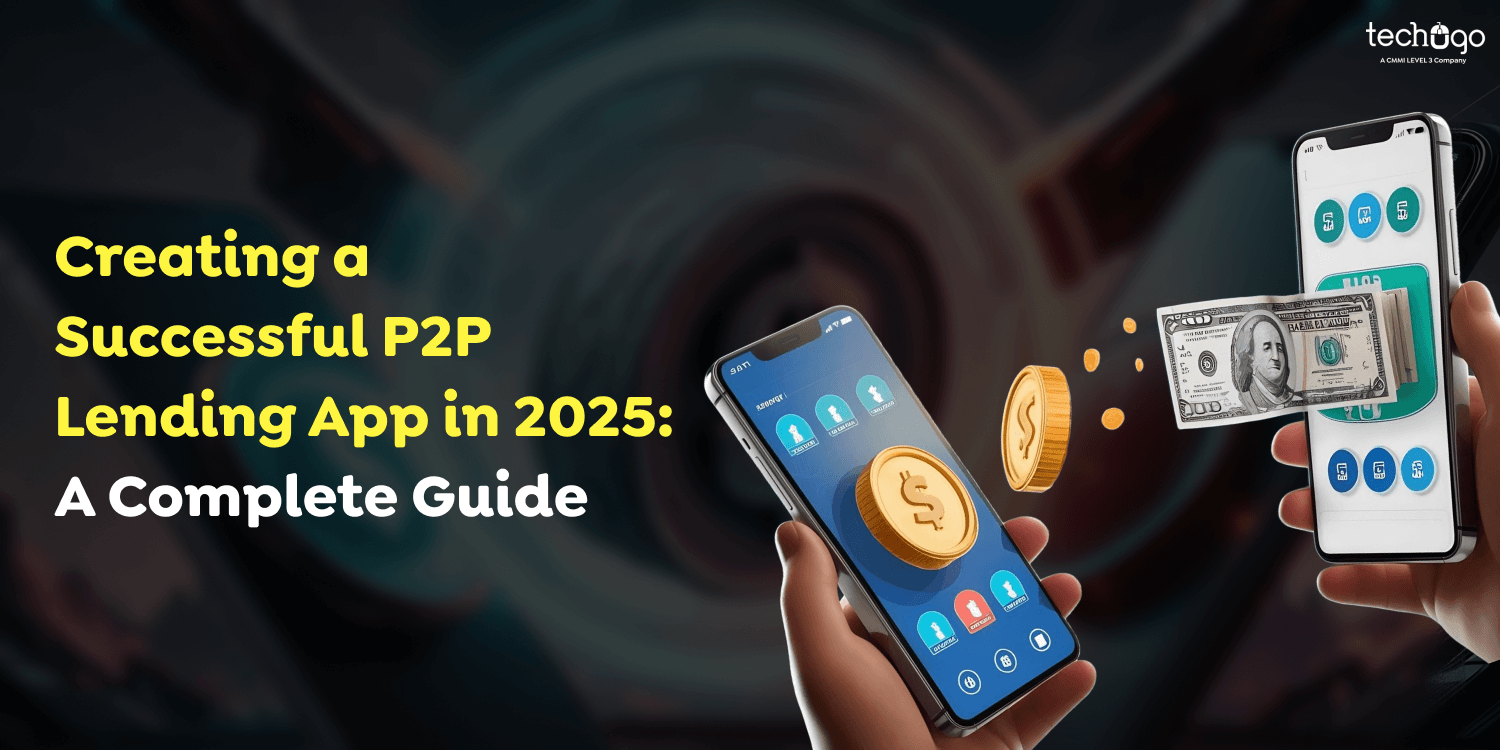
The fintech market is still rapidly expanding, and a new market participant that plays a significant role in redefining the industry is P2P lending apps. These apps provide lending without the assistance of established banking sectors, enabling people to borrow or invest easily. Due to increased customer adoption of advanced technology, this lending model has received considerable traction, with the market for P2P hitting the global figure of $1,506.24 billion in 2031.
Despite the high hurdle in establishing a P2P lending app in 2025, with good interface design, enhanced security, adoption of the latest technologies, and meeting the regulatory guidelines. This tutorial will outline the essential processes for developing the best P2P lending app and successfully entering the fascinating fintech market.
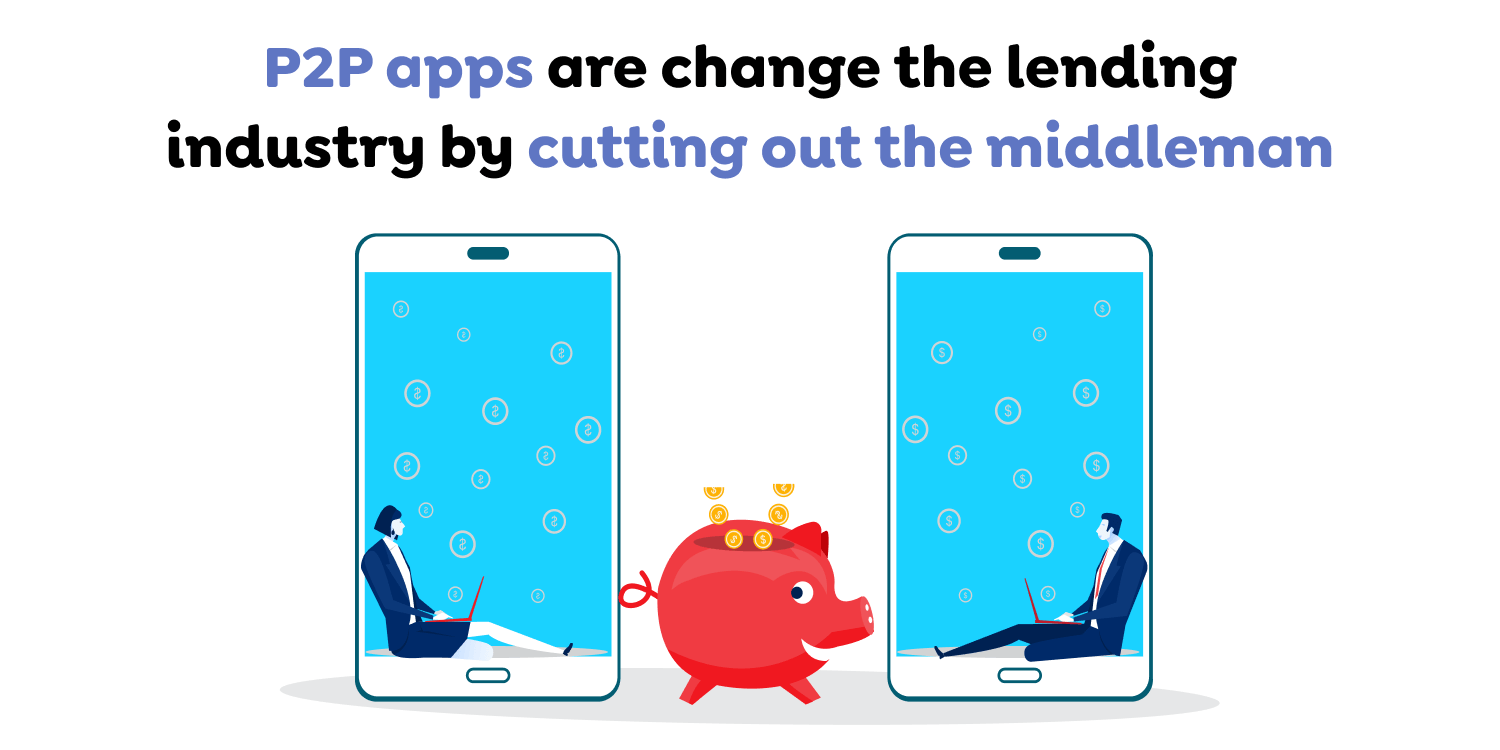
A peer-to-peer lending app is a mobile application where borrowers and lenders interact directly in transactions without an intermediary. This immediate link minimizes expenditures at both ends, resulting in fewer charges than most financial loans. P2P lending apps typically feature two user panels: one on the demand side of the credit market and the other on the supply side.
Also Read : How to Create a Money Lending App: Funding the Future By Making Lending Easy!
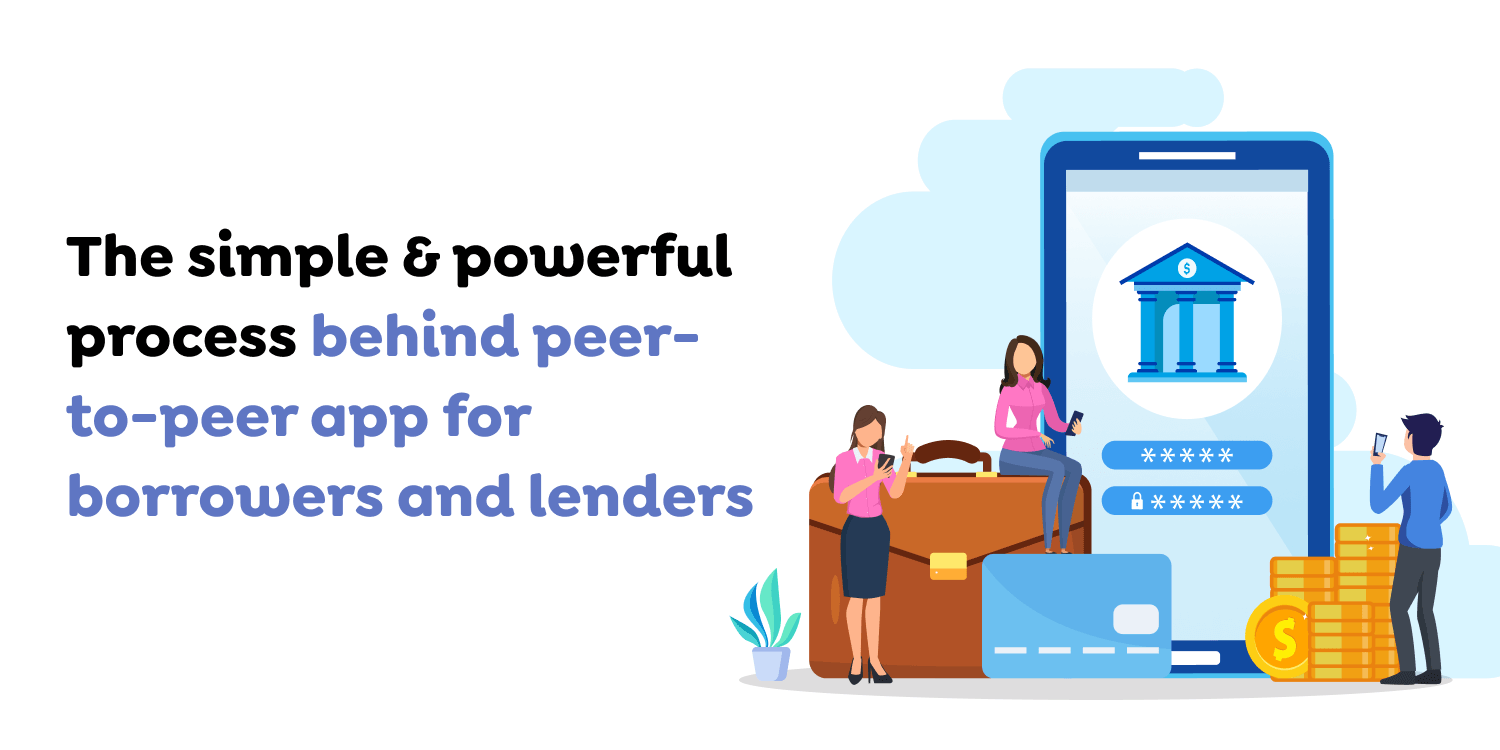
1. Sign Up: Consumers sign up using their details on the web platform by completing registration forms with their basic and credit details.
2. Profile Verification: They are ready-made and verified, which gives the lenders risk information.
3. Loan Market: After verification, the loan requests go live, and anyone who wishes to lend can offer to provide the loan.
4. Loan Acceptance: When endowed with all the funds, the borrower checks the terms inside the term sheet, involves minimal transaction costs, and takes the loan.
5. Repayment: Borrowers pay back loans based on the agreed repayment plan with the usual monthly payment.
Also Read : What’s the Investment Required to Develop a Fintech App Like Myfawry?
1. Sign Up: Borrowers and lenders sign up on the platform.
2. Select Account Type: An account type is selected depending on the specific investment goals; most common are growth or income accounts.
3. Add Funds: After choosing an account, lenders fund it as well.
4. Lending Money: Lenders view applications and place offers.
5. Repayment: Loan payments are made monthly and always are both principal and interest.
Also Read : How Much Does It Cost to Build a Payment App Like Zain Cash?
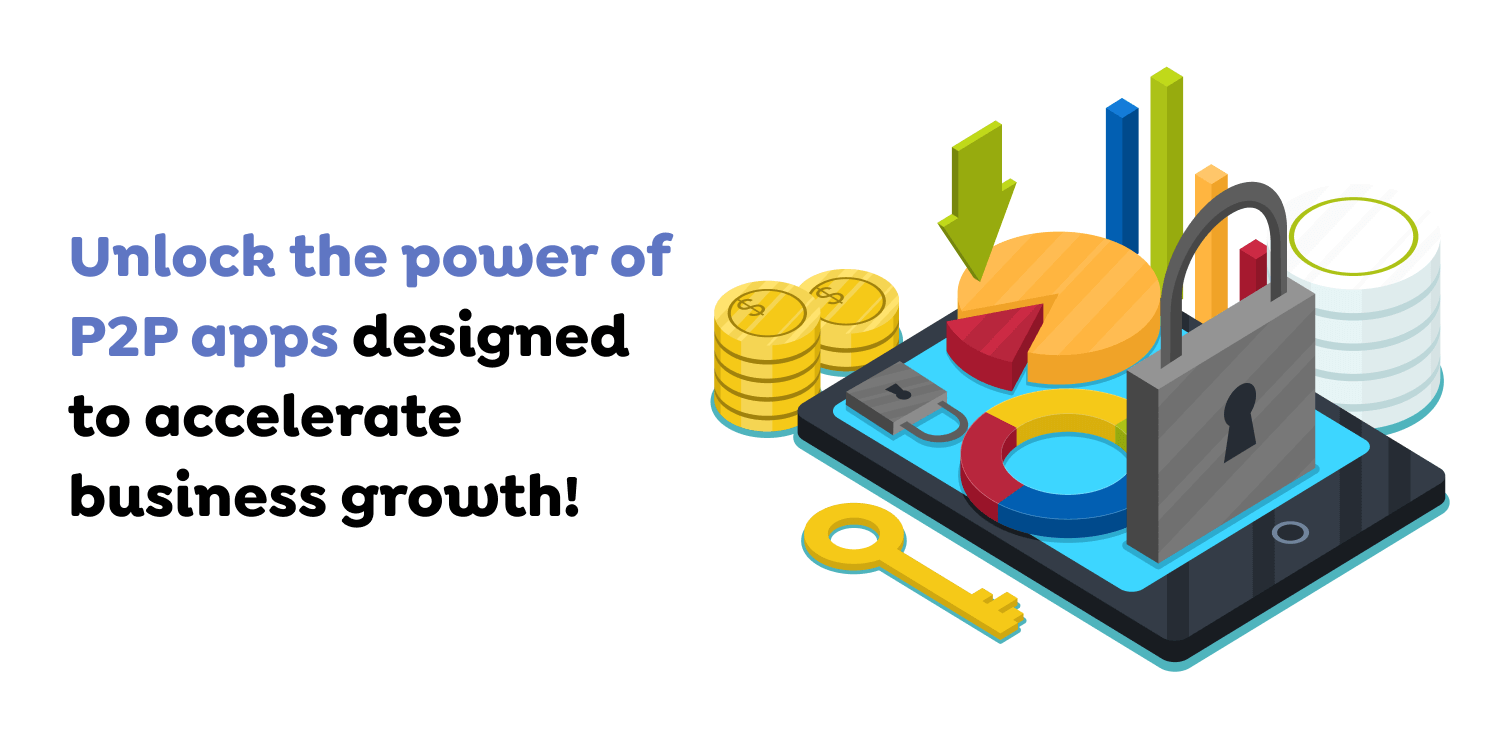
The demand for alternative lending is increasing as people seek accessible, tech-driven financial solutions. Here are some benefits of developing a P2P lending app:
1. Accelerated Business Growth: First, P2P lending emerged as the market moved to the non-bank institutions level, and it is a fast way to grow a business. Given the global market expansion at the present level, firms can meet the demand by supplying simple and comprehensible lending services.
2. Diverse Revenue Streams: There are three main ways in which P2P can generate earnings: transaction fees, interest spreads, and extra functionalities. These valuable apps use elements like advertising, subscription, or commission based on continual revenue production.
3. Global Reach: An optimally planned P2P lending app has the potential to expand access and connect with global users for lending and investing.
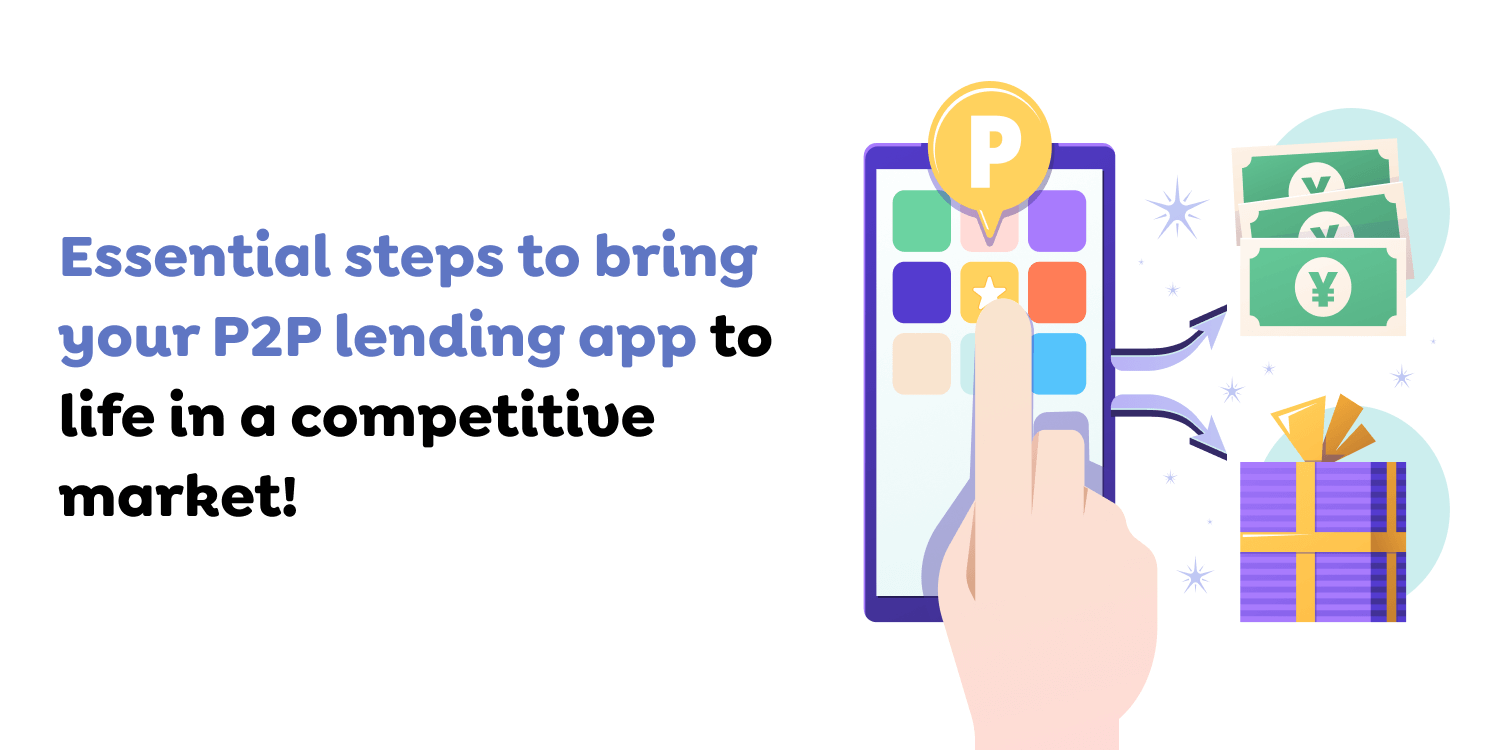
Development, however, requires prior research. Analyze recent P2P apps to determine what features are crucial for an application, what is lacking in similar applications, and what users tend to expect from such P2P applications. For instance, analyze competitors and find opportunities for differentiation, such as qualitatively lower or entirely new transaction fees. Research aids a firm in defining the kind of product it wants to produce and satisfying consumers’ needs in a more competitive world.
Also Read : Money Lending Mobile App: A Financier at Your Arm’s Length
Security is a top priority, as P2P lending apps handle sensitive financial data. In 2025, consumers demand high standards of data protection, making it essential to implement:
Select a business model that aligns with your target audience and revenue goals. Popular options include:
The right model will depend on your app’s features and target market.
Also Read : Exploring Insurance Policy Management Software: It’s Top Platforms & Our Expertise
The features of your P2P app significantly influence its user appeal and functionality. Here are key features to consider:
To stand out, consider incorporating AI-powered tools to analyze borrower risk or personalize investment suggestions for lenders.
Also Read : Creating an App Like Tamara For User-Friendly Split-Payment Solution
One of the most significant success factors is an attractive and intuitive design that will hook users and make them return for more. That is why convenience and clarity are among the most critical qualities, allowing users to easily navigate the fintech applications’ costs and other financial details. Build a great UI/UX design by hiring a professional team whose work will involve the best of both form and substance.
A Minimum Viable Product, or MVP, is the best strategy for testing your application idea before launching the full version. An MVP comprises the key functionalities. You launch a product and assess its performance without spending much money. This helps reduce development costs while ensuring you get a mobile application that meets your users’ needs.
Also Read : Understanding MVP App Development Costs: A Comprehensive Guide for Startups
Once you’ve refined your MVP, build the full version of your app. Rigorous testing ensures your app is error-free, performs smoothly, and maintains security. Employ the latest testing tools and techniques to identify and resolve issues before launch.
Also Read : Mobile Banking Trends in the UK : The Rise of Fintech
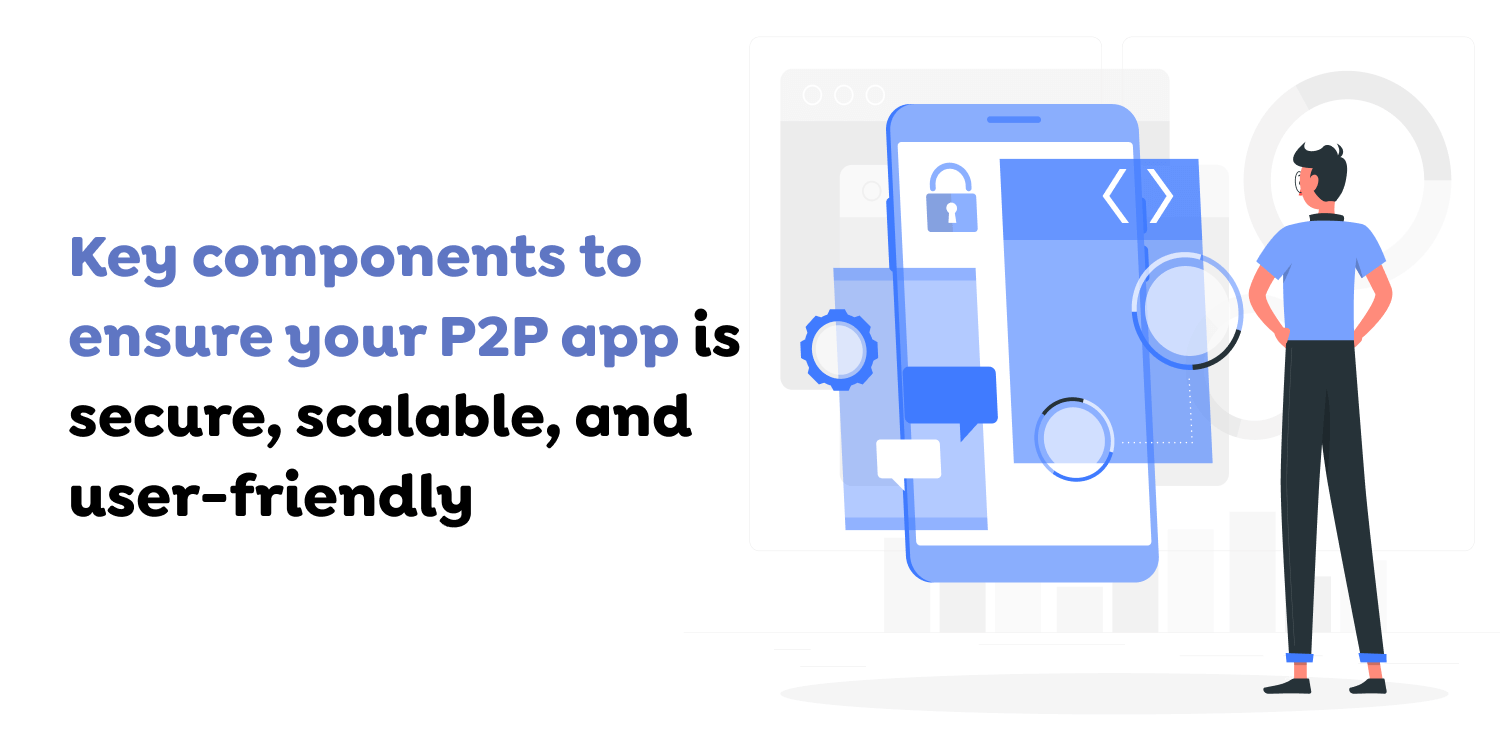
Choosing the right tech stack for your app influences its performance, scalability, and security. Here are recommendations for core components:
P2P lending apps must establish credibility with their users. Building trust requires transparency in transactions, clear communication of terms, and enhances customer satisfaction.
With no bank acting as an intermediary, P2P lending platforms need robust mechanisms for evaluating borrower risk. High default rates can deter lenders, so offering strong risk management features is essential.
It can be daunting to combine a seamless user experience with high-security standards. Features like multi-factor authentication and strong encryption protocols add security layers, but they should also be easy for users to navigate.
Also Read : Step-by-Step Guide for Mobile App Development Process
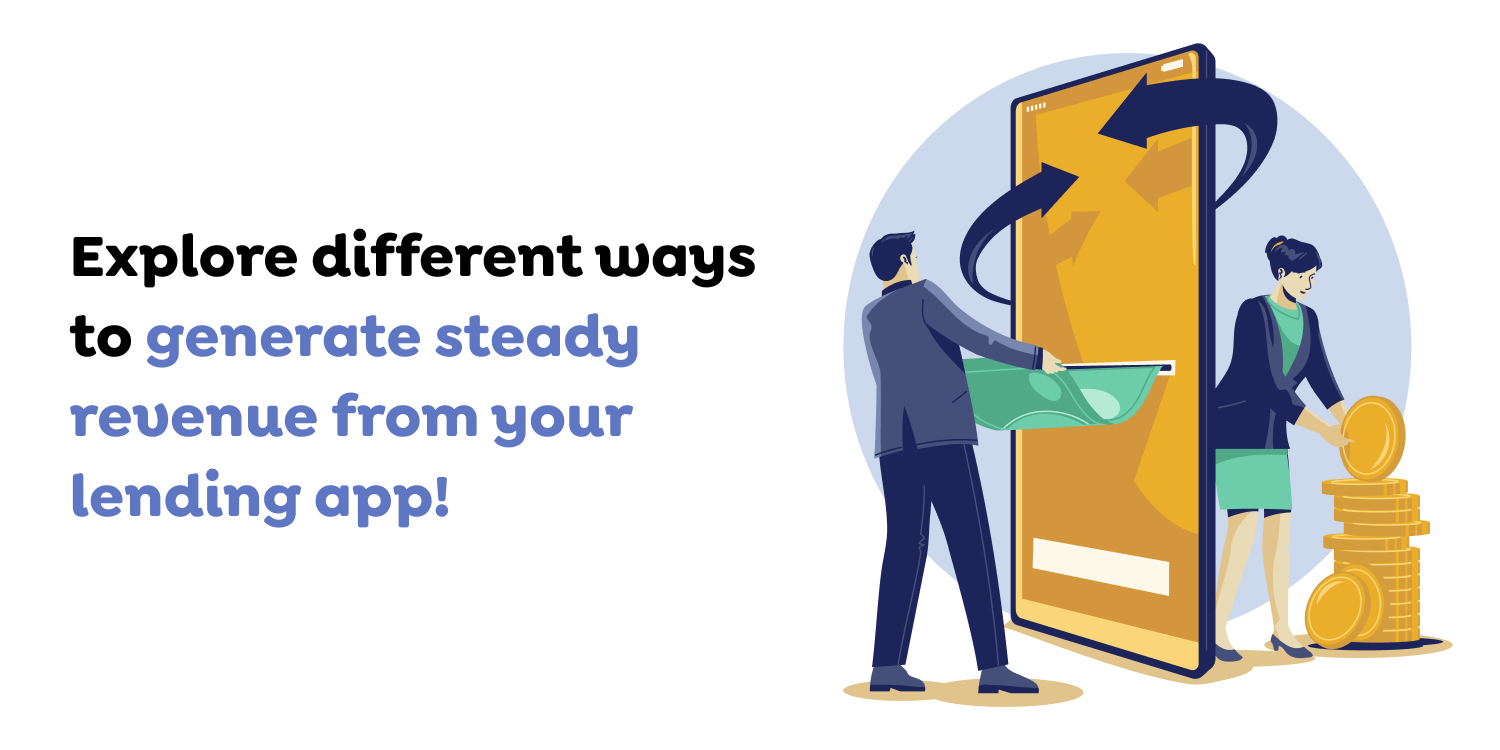
There are various ways to generate revenue from a P2P lending app, and choosing the right monetization strategies can have a significant impact on the app’s profitability:
Charging a percentage of the loan transaction value as a service fee or commission is a standard model. Both lenders and borrowers can be charged a nominal fee on each transaction.
Offering premium features for a monthly or annual fee can provide additional value for users. Premium features may include higher bidding limits, advanced investment analytics, or enhanced customer support.
Partnering with financial service providers or credit rating companies for advertising can provide an additional revenue stream, mainly if the mobile app attracts a large user base.
Charging fees for loan origination and ongoing servicing (e.g., for collections or reminders) can generate steady revenue. This approach is often less noticeable to users as it’s built into the transaction process.
Also Read : What is the Cost of Building a Fintech App?
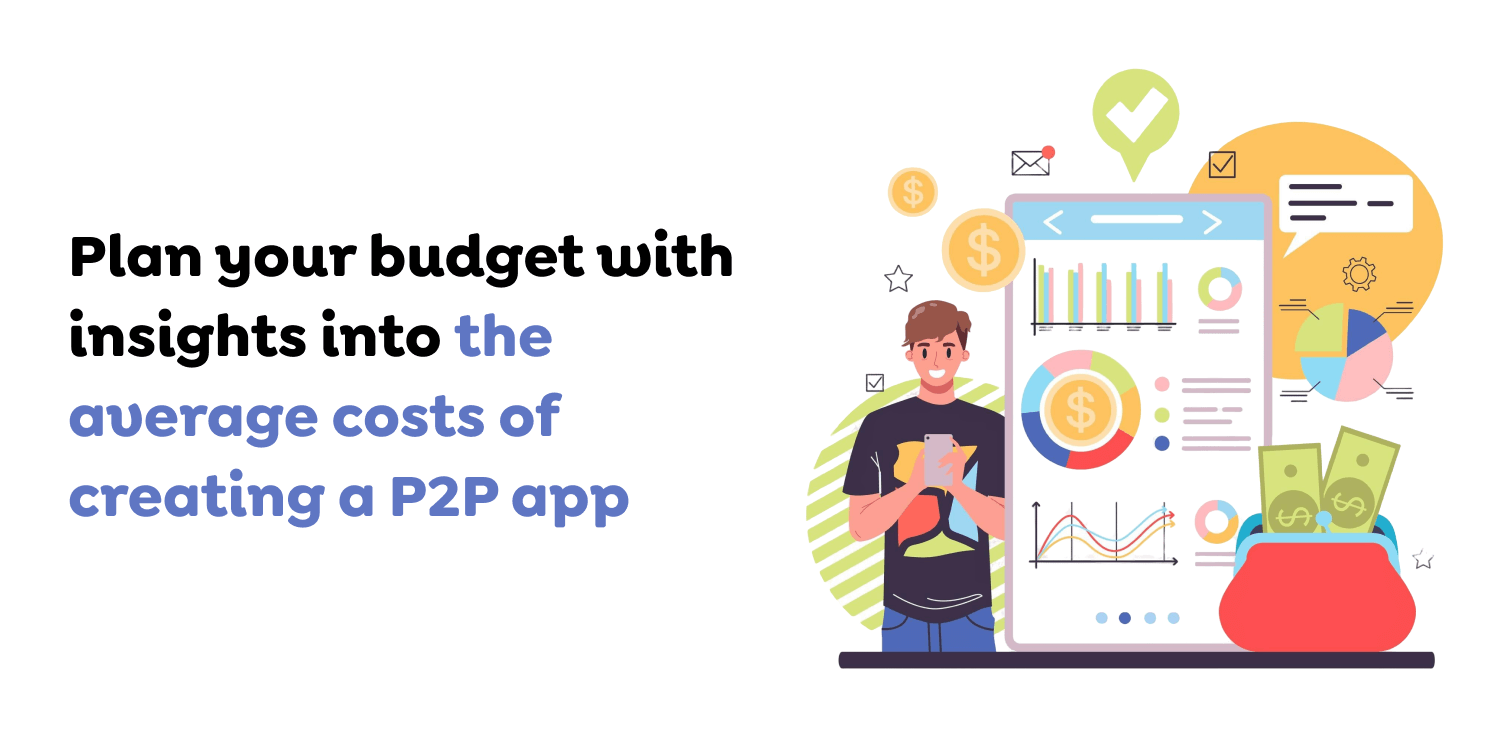
The development cost varies depending on features, app complexity, and region. On average, a P2P app costs between $50,000 and $90,000 to develop, design, test, and launch. However, advanced features, high-end security, or extended support may increase costs. Discussing pricing with a reputable mobile app development company can help you create a realistic budget.
A successful app launch requires an effective marketing strategy. Some ways to promote your P2P app include:
Also Read : Mobile App Development in the Middle East: 2025 Trends & Success Stories
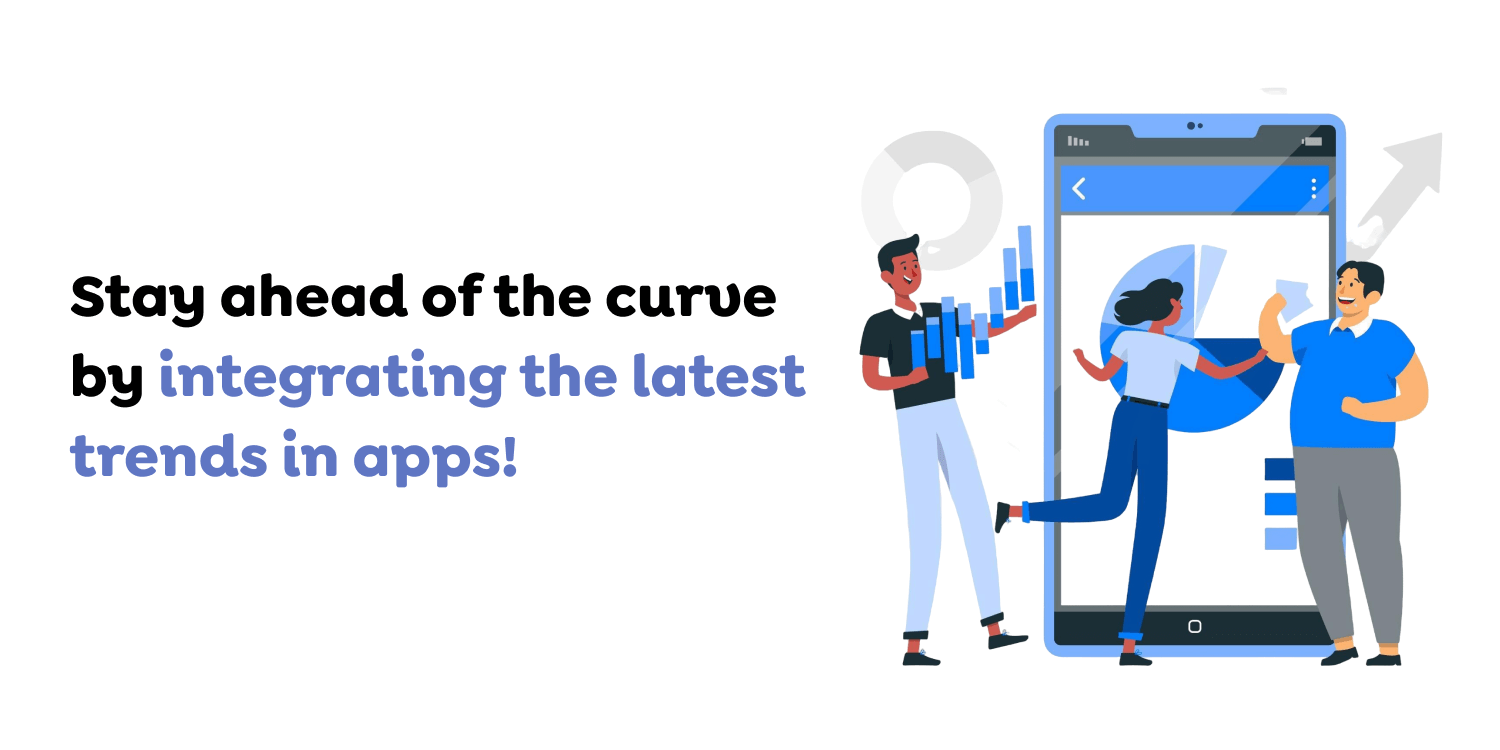
As the fintech landscape continues to evolve, several trends are emerging within the P2P lending industry that can provide new opportunities. Leveraging these trends will keep your app competitive and appealing:
Machine learning algorithms can easily replace other hands-on methods for evaluating borrower information, and avoiding AI helps make lending safer and more defaults. Risk assessments made with the help of AI make lending safer and more available.
Blockchain technology represents a more efficient platform for tracking loan flows due to its higher security and transparency. Incorporating blockchain in your app will create transparent transaction records for compliance and better regulatory measures.
Borrowing and lending have become new frontiers for decentralized financial platforms as they adjust their existing economic models. Integrating DeFi staking protocols into a P2P lending app can extend the decentralization of lending to include opportunities for users to transact.
Also Read : 15 Game-Changing FinTech Trends Set to Revolutionize 2025!
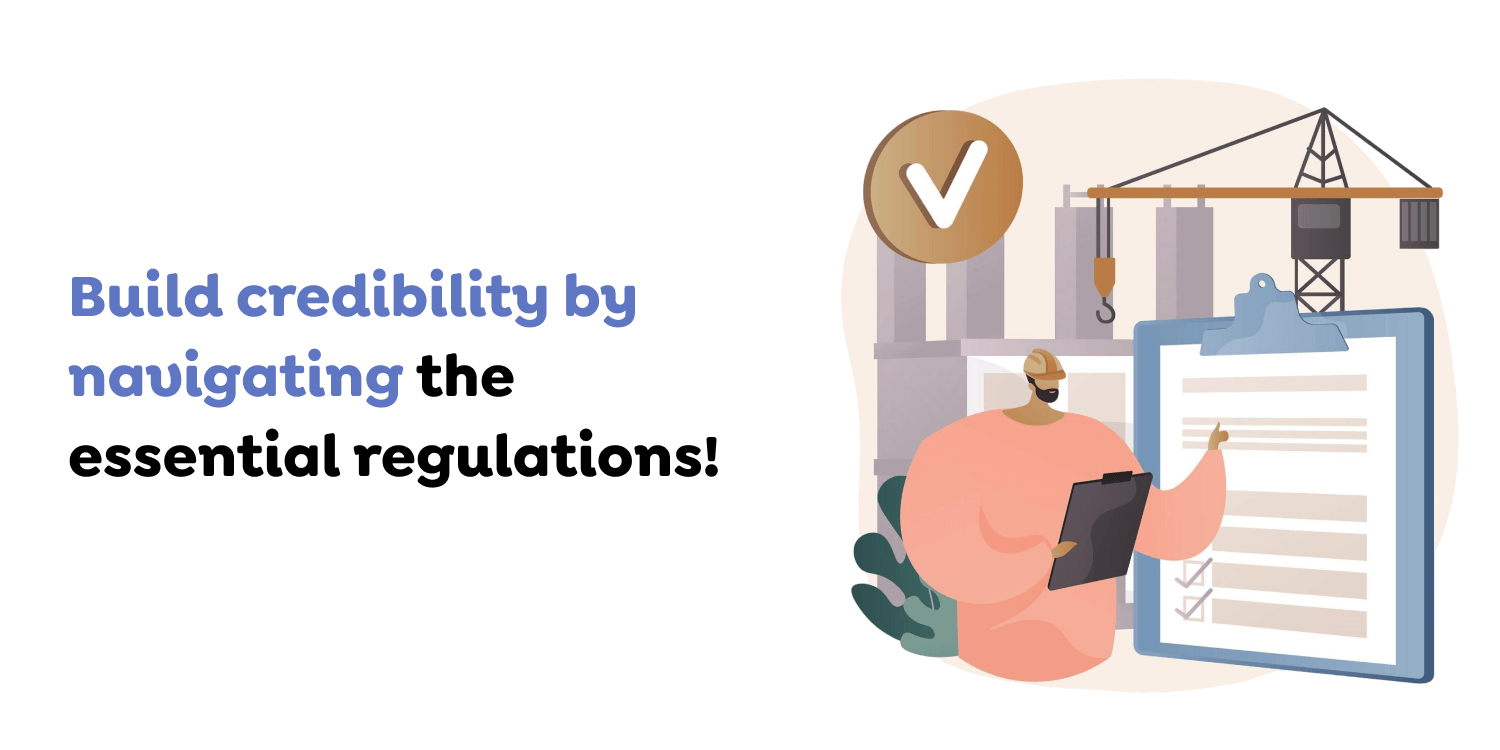
Compliance with financial service regulations is essential for any P2P lending app. To ensure security and legal operation, consider the following:
KYC and AML measures assure the identities of borrowers and lenders, eliminate fraudulent activities, and respect government regulations.
The other laws safeguard borrowers from unreasonable activities by lenders. Thus, updating these regulations allows you to conduct the app legally.
Rules such as GDPR for European countries and CCPA for California state regulate how users’ personal information must be processed. Your app must meet these standards for it to have widespread access.
Dive into the future of fintech!
Developing a successful P2P lending app for 2025 depends on market analysis, security formatting, and an excellent user interface. When partnered with a good app development team, the competency-based approach outlined in this guide can help you build a strong platform that meets current consumer needs.
If you are looking for a partner who knows all the nuances and can guarantee success, Techugo, a fintech development company, can help you turn your idea into a successful product. With the increase and expansion of the P2P market, the right time is now to debut an intelligent lending application focusing on users.
Get in touch with Techugo to explore more about peer-to-peer apps!
Write Us
sales@techugo.comOr fill this form